Answered step by step
Verified Expert Solution
Question
1 Approved Answer
al Exam e T L L This test: 150 point(s) possible This question: 8 point(s) possible & EIL LR According to a certain government agency
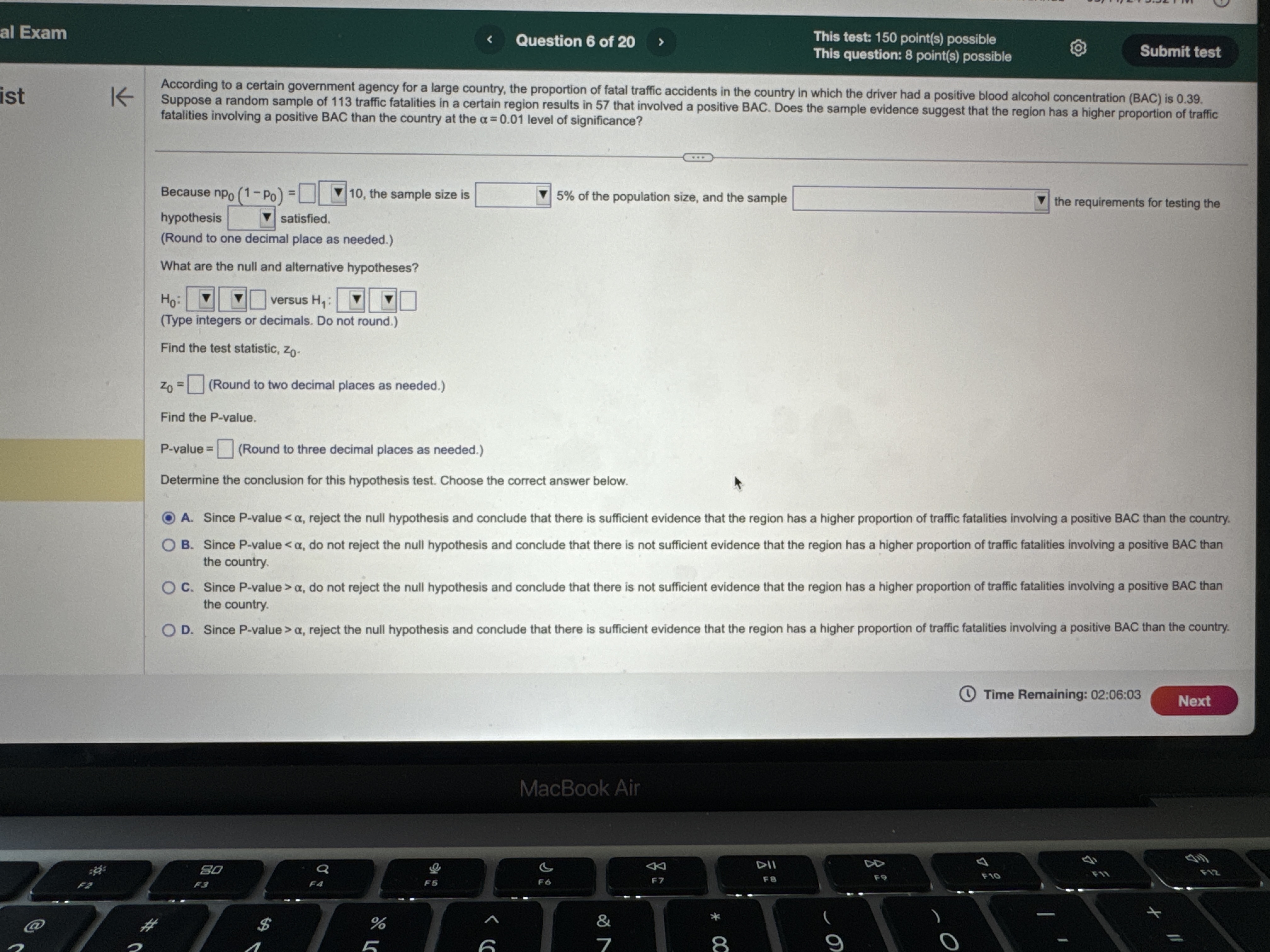
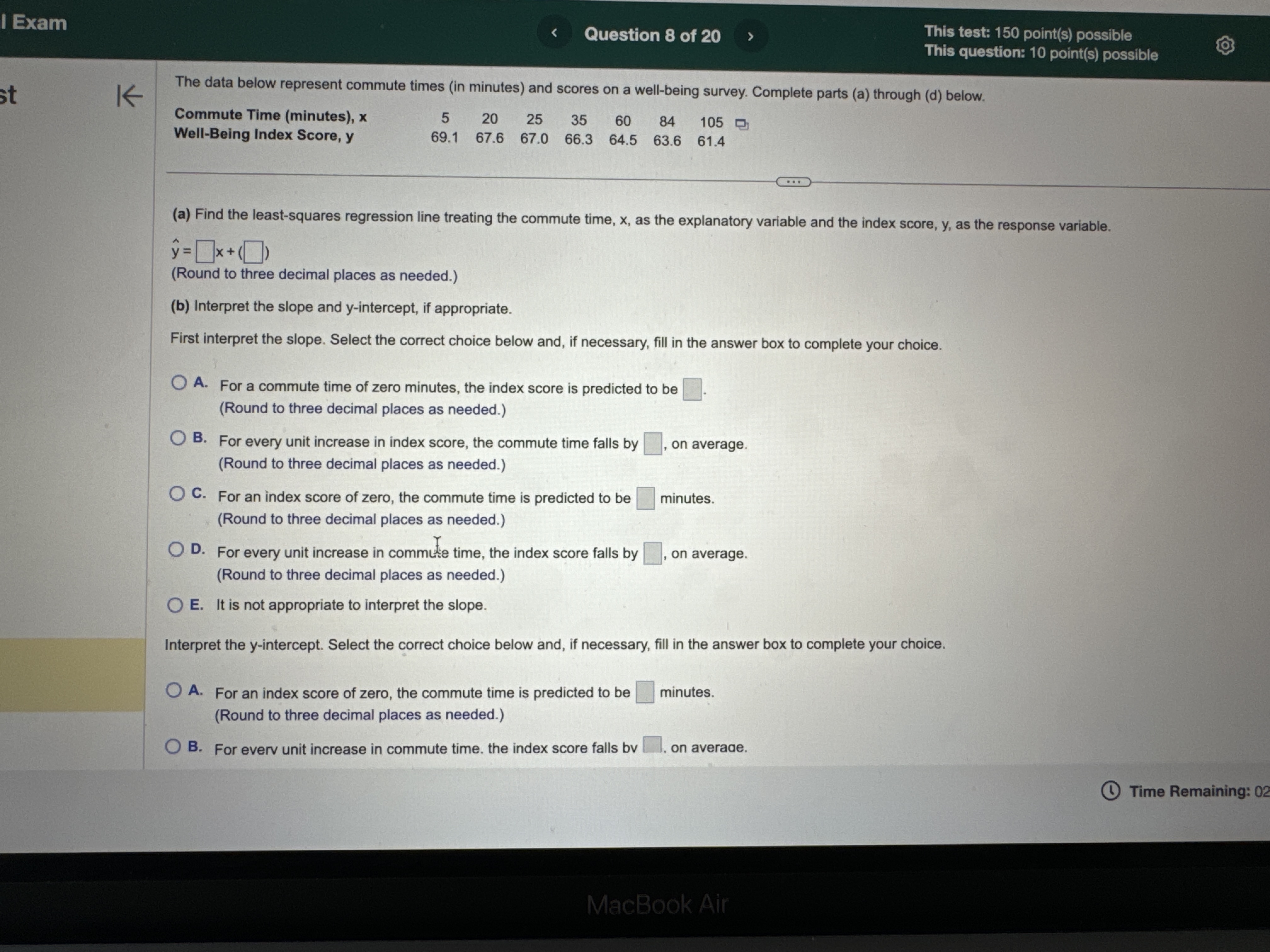
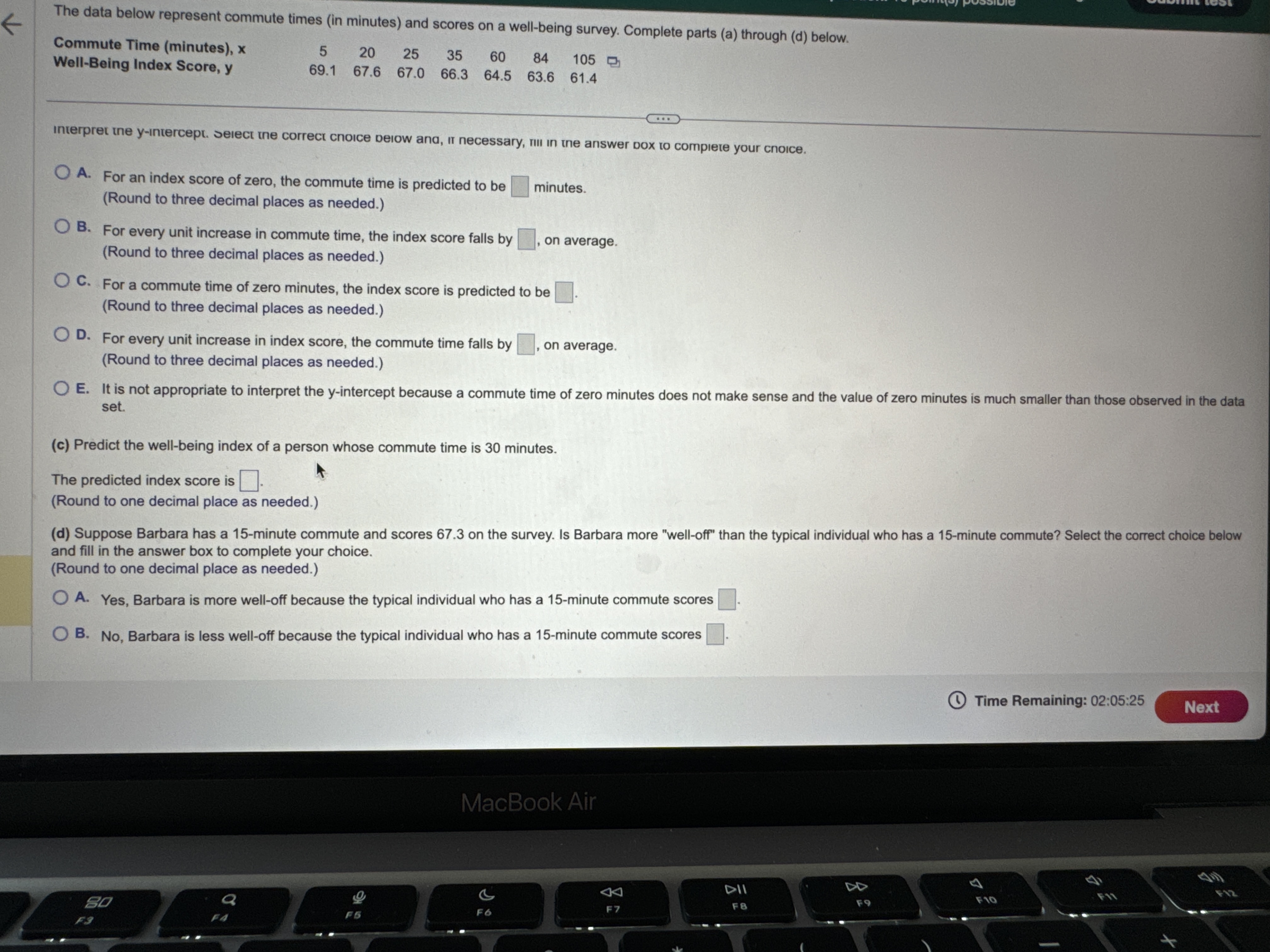
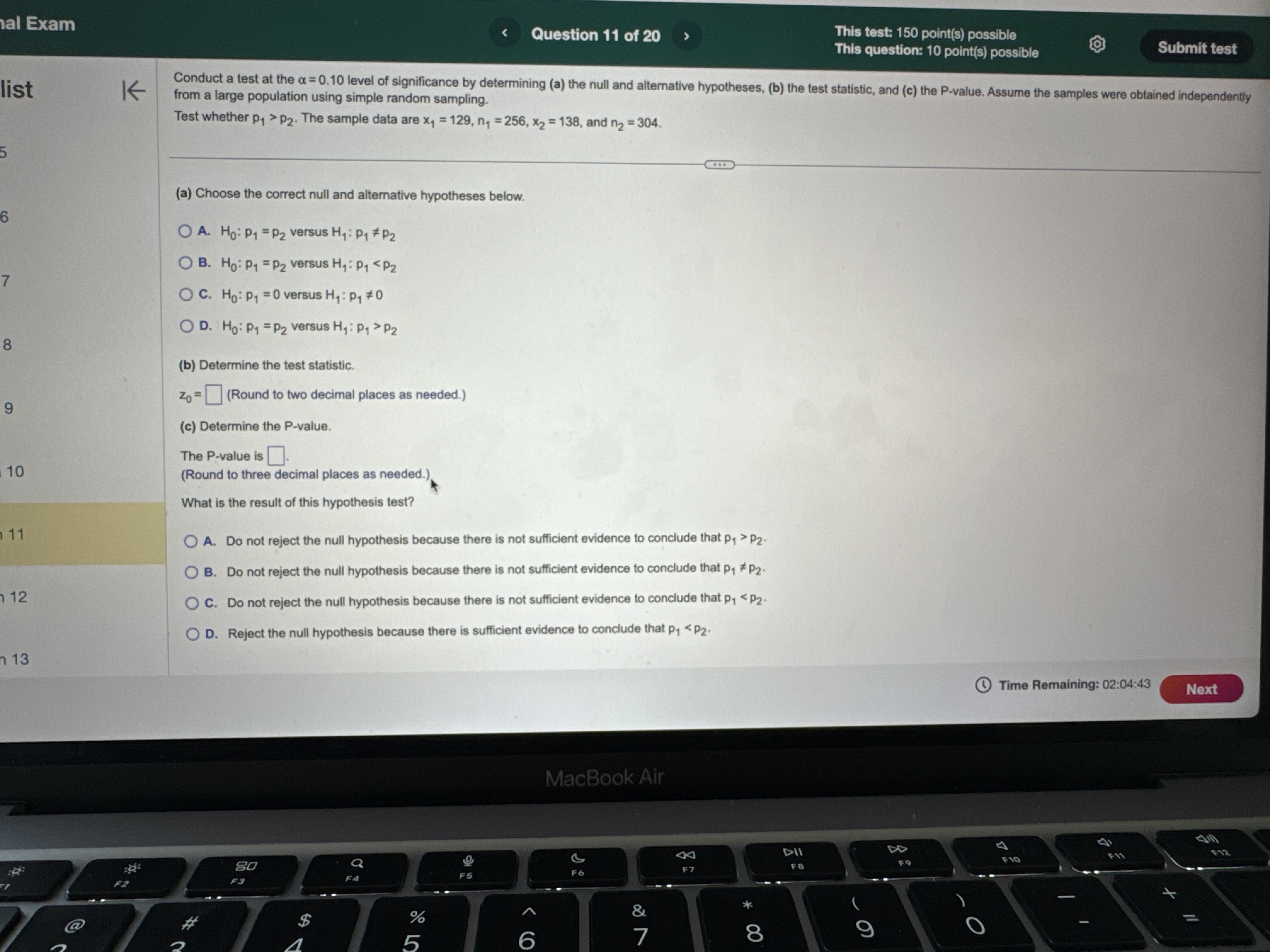
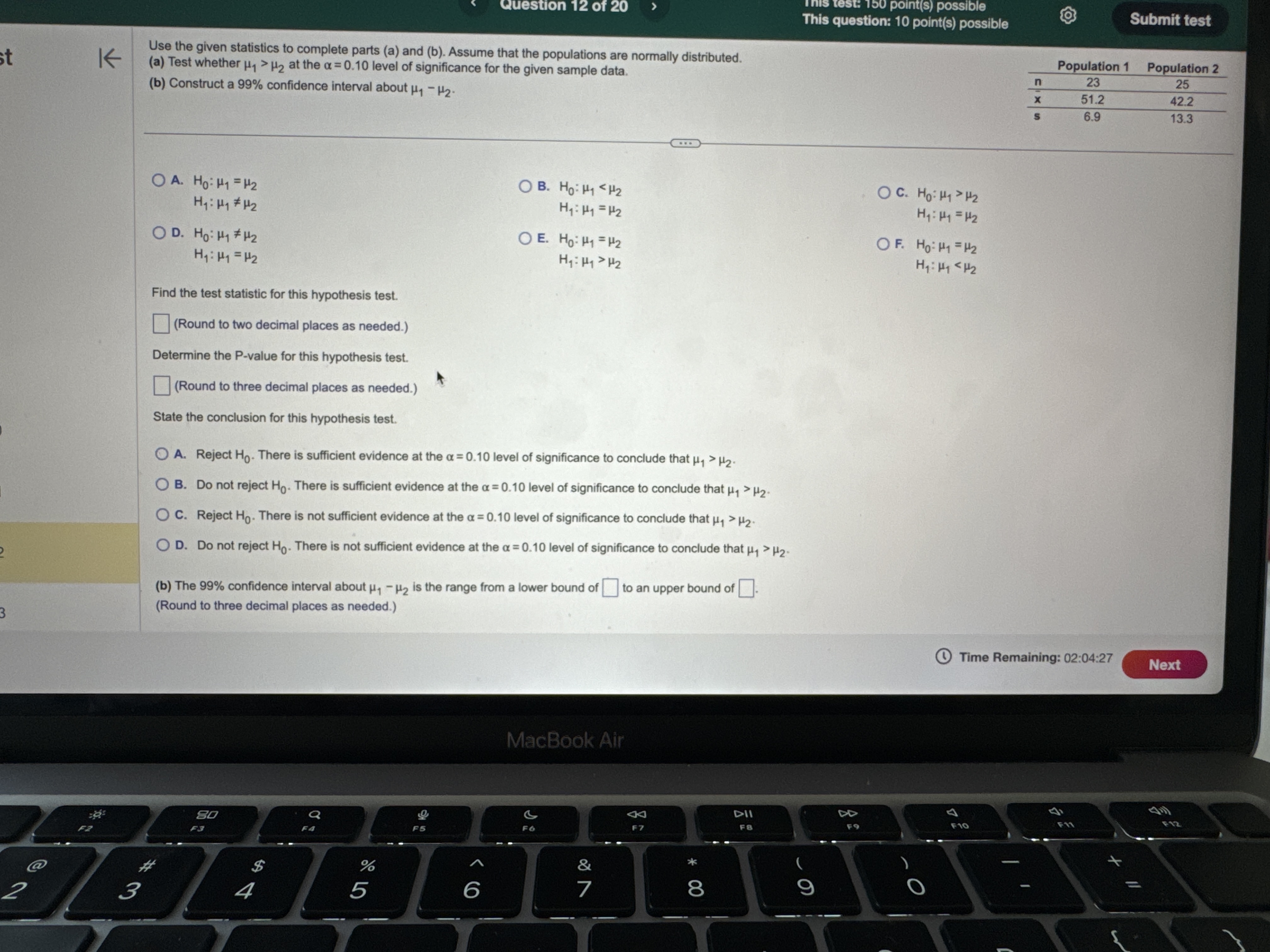
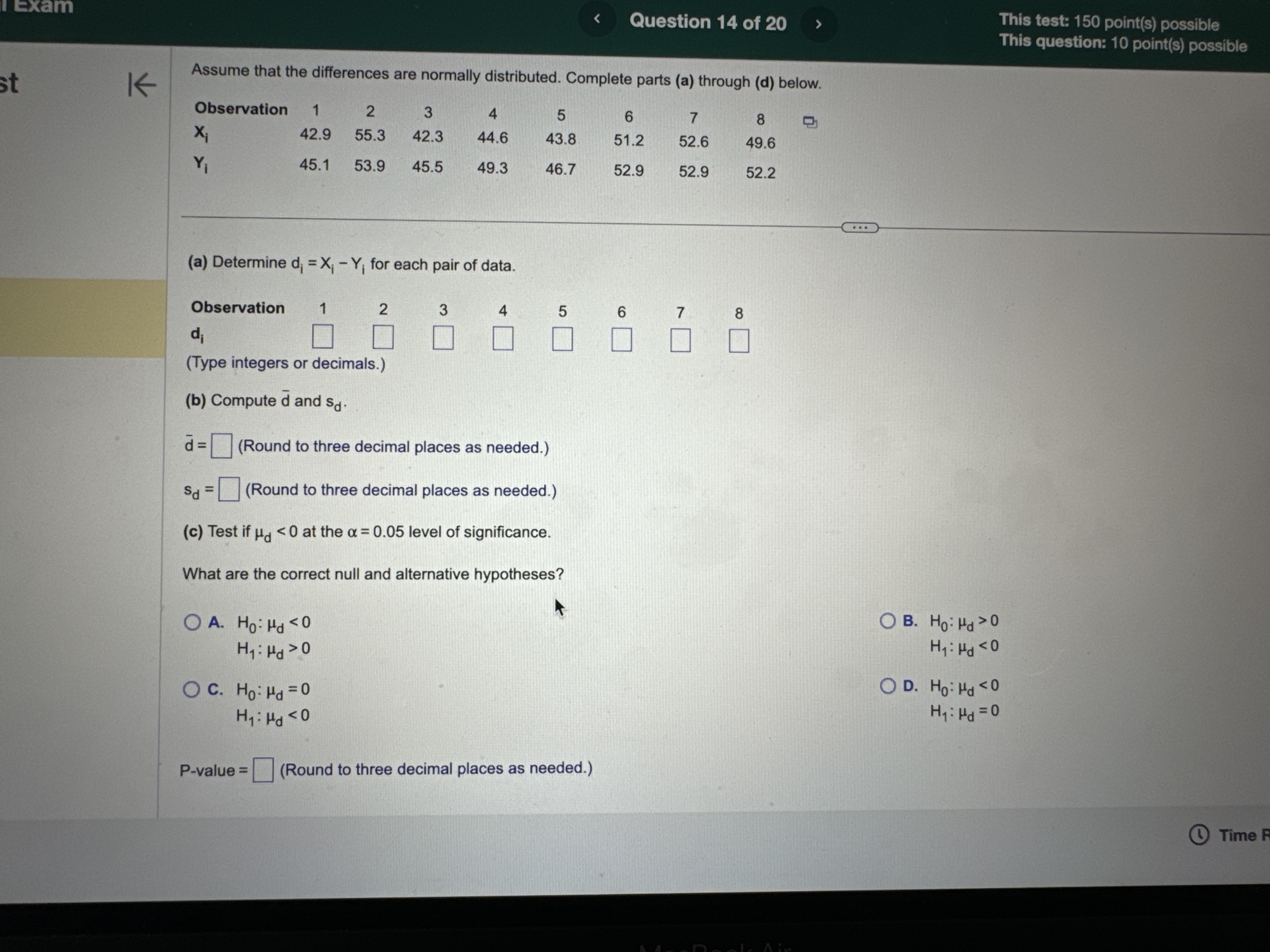
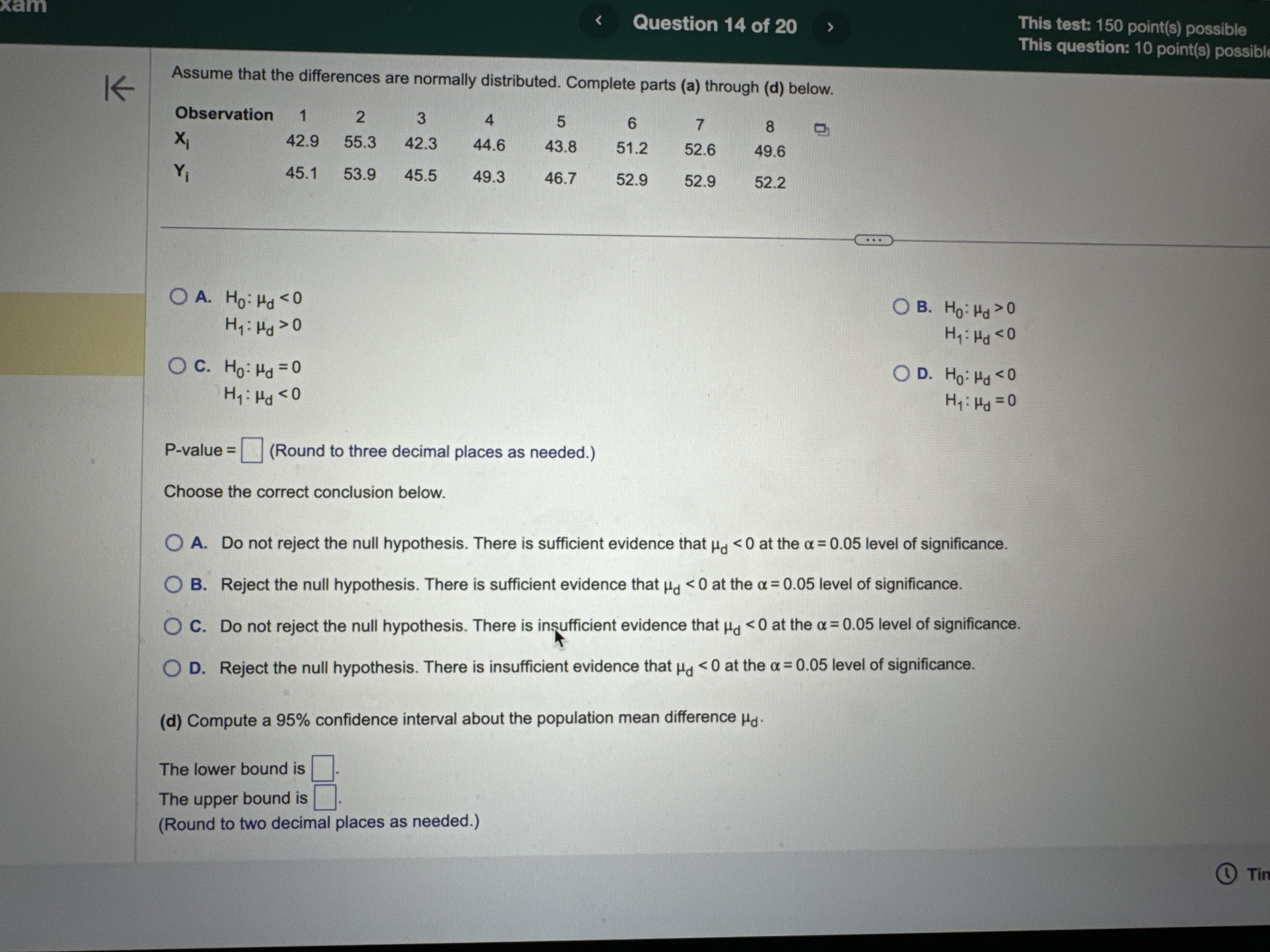
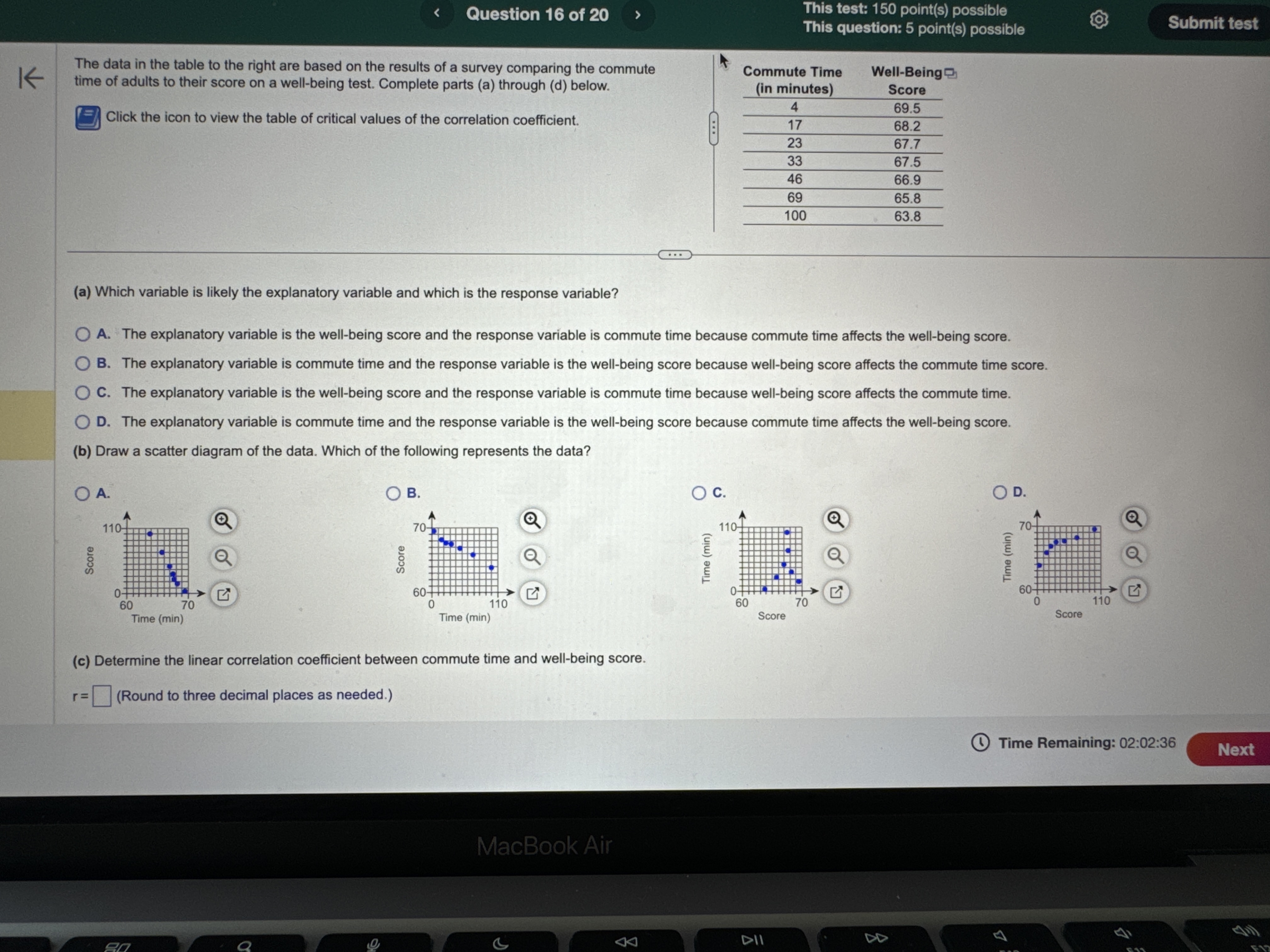
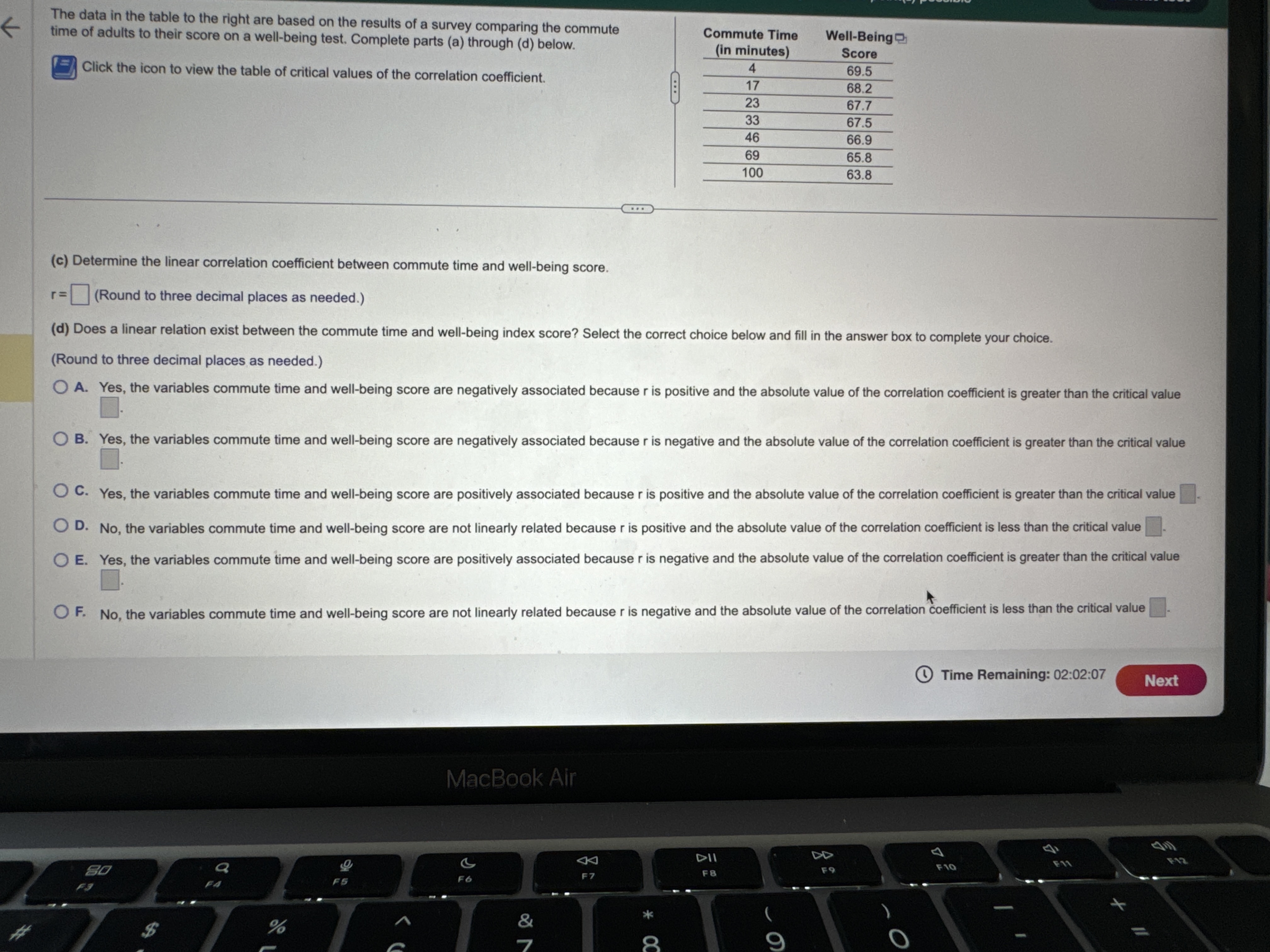
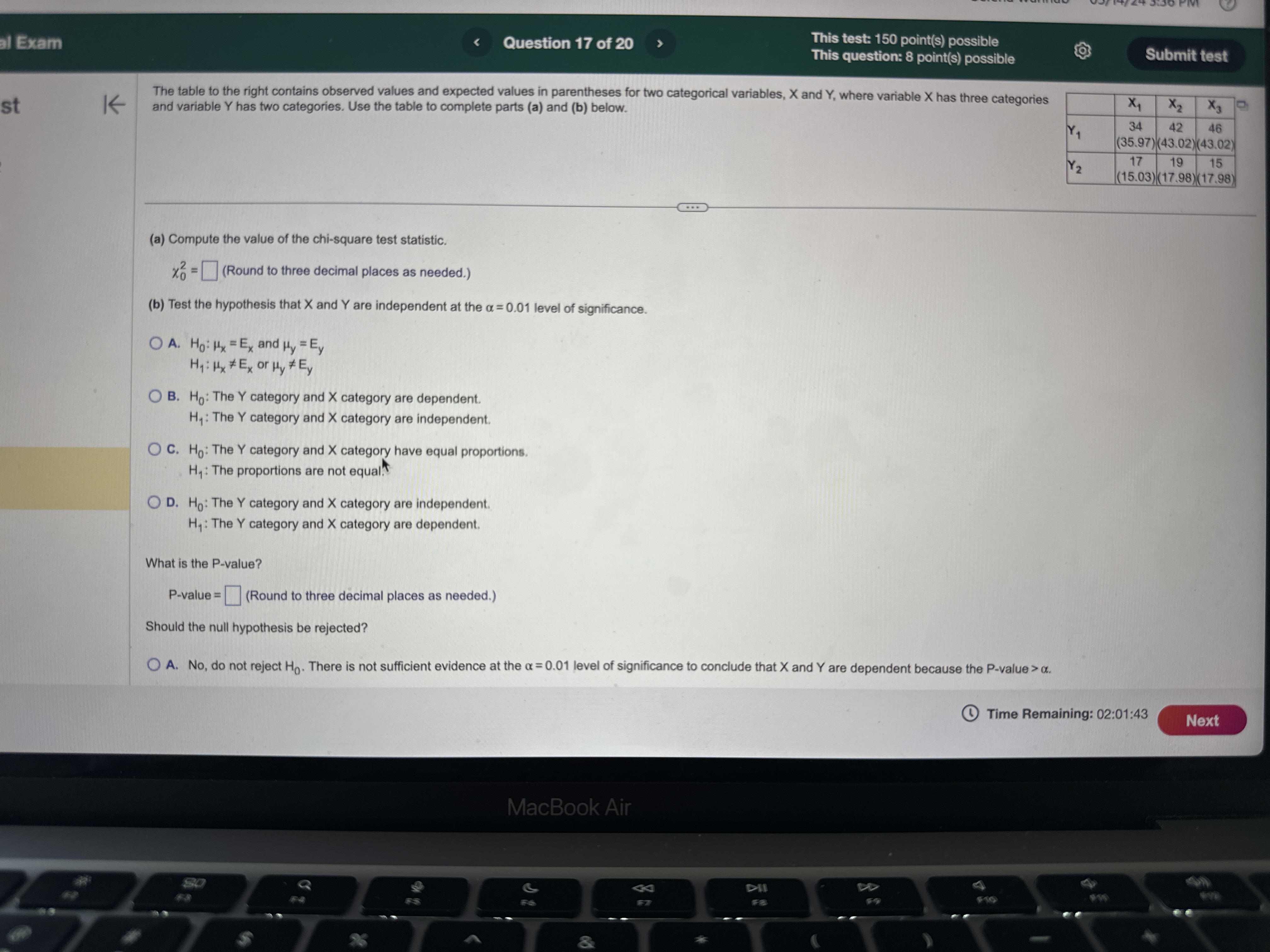
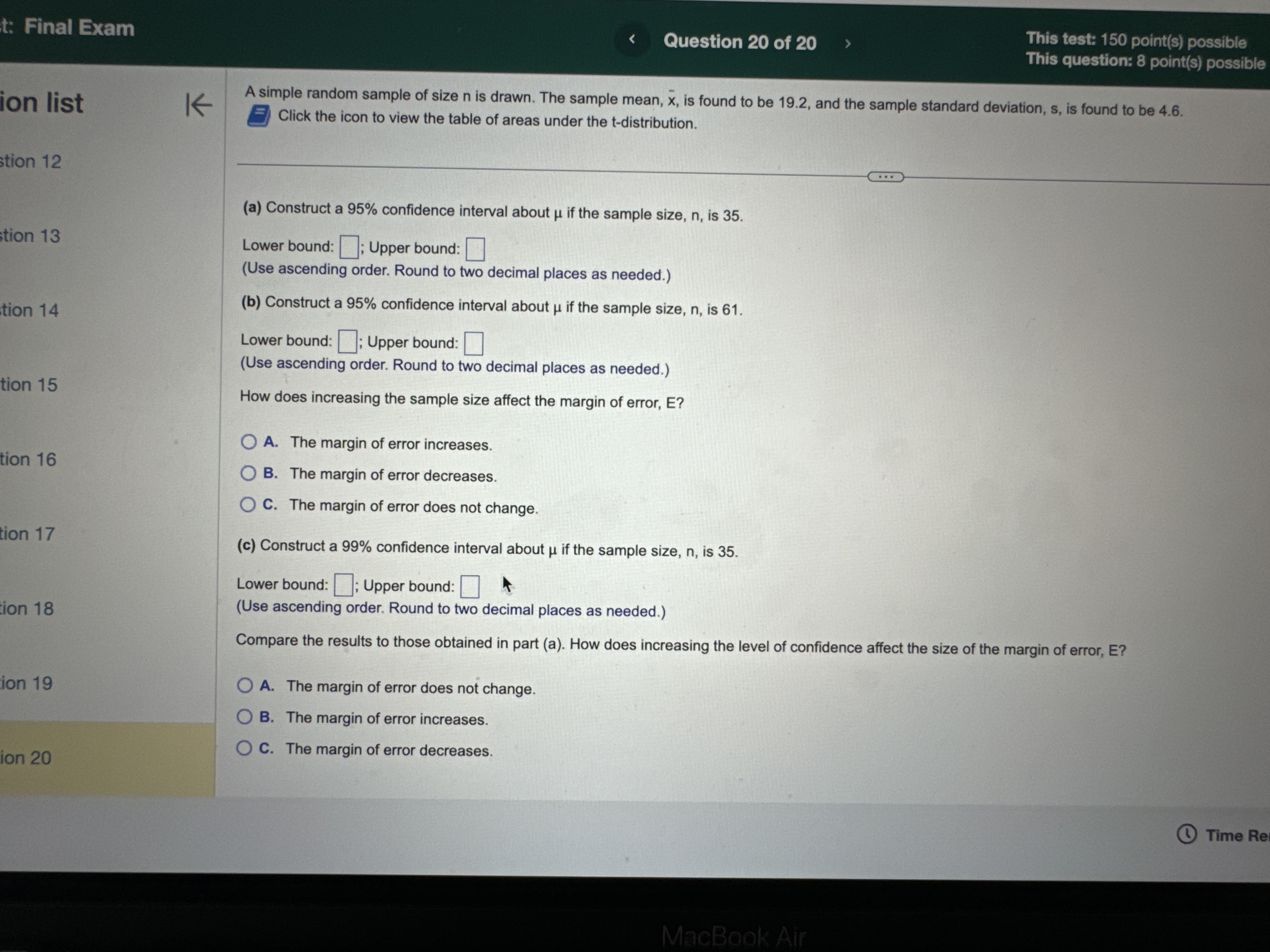
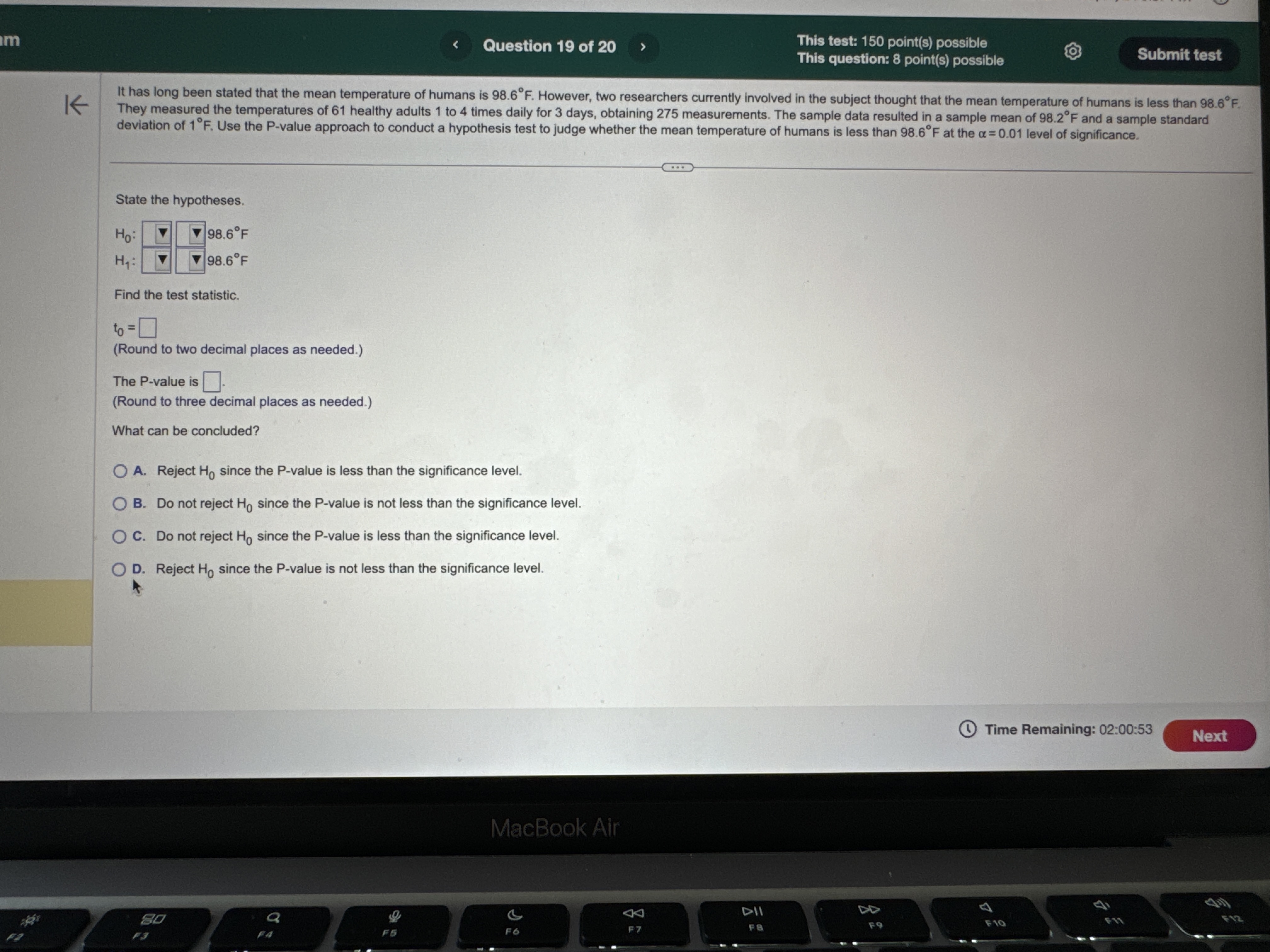
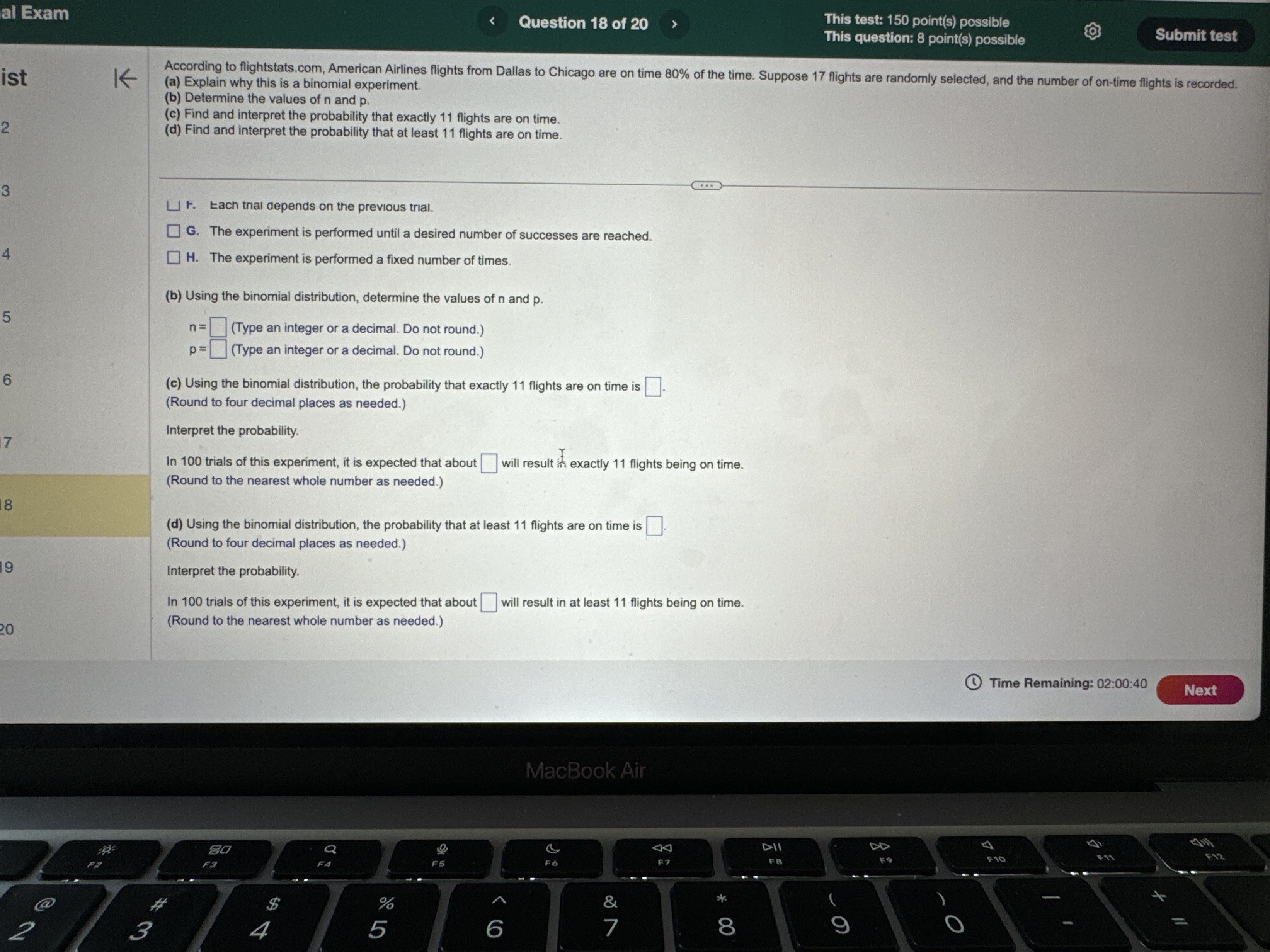
H2 Hy : Hy # H 2 Hy : My = H2 Hy: My = H2 OD. HO: My # H2 OE. HO: H1 = H2 OF. HO: Hy = H2 Hy: 141 = H2 H1 : 14 > H2 Hy: Hy H2 O B. Do not reject Ho. There is sufficient evidence at the a = 0.10 level of significance to conclude that #1 > H2- O C. Reject Ho. There is not sufficient evidence at the a = 0.10 level of significance to conclude that #1 > H2. O D. Do not reject Ho. There is not sufficient evidence at the a = 0.10 level of significance to conclude that #1 > H2- (b) The 99% confidence interval about , - H2 is the range from a lower bound of to an upper bound of ]. (Round to three decimal places as needed.) Time Remaining: 02:04:27 Next MacBook Air A 44 F10 F11 80 S FO F7 FA @ % O 4 5 6 8 9Exam Question 14 of 20 This test: 150 point(s) possible This question: 10 point(s) possible Assume that the differences are normally distributed. Complete parts (a) through (d) below. st K Observation 1 2 3 5 6 8 X 42.9 55.3 42.3 44.6 43.8 51.2 52.6 49.6 45.1 53.9 45.5 49.3 46.7 52.9 52.9 52.2 (a) Determine di = X; - Y; for each pair of data. Observation di (Type integers or decimals.) (b) Compute d and sd. d = (Round to three decimal places as needed.) Sd = (Round to three decimal places as needed.) (c) Test if Ha 0 OA. Ho: Hd 0 OD. Ho: Hd 0 Hy : H d > 0 Hy : Hd a. ) 0 P i @ Time Remaining: 02:01:43 m i t: Final Exam Question 20 of 20 This test: 150 point(s) possible This question: 8 point(s) possible ion list K A simple random sample of size n is drawn. The sample mean, x, is found to be 19.2, and the sample standard deviation, s, is found to be 4.6. Click the icon to view the table of areas under the t-distribution. stion 12 (a) Construct a 95% confidence interval about u if the sample size, n, is 35. tion 13 Lower bound: ; Upper bound: (Use ascending order. Round to two decimal places as needed.) tion 14 (b) Construct a 95% confidence interval about u if the sample size, n, is 61. Lower bound: ; Upper bound: (Use ascending order. Round to two decimal places as needed.) tion 15 How does increasing the sample size affect the margin of error, E? A. The margin of error increases. tion 16 O B. The margin of error decreases O C. The margin of error does not change. tion 17 (c) Construct a 99% confidence interval about u if the sample size, n, is 35. Lower bound: ; Upper bound: tion 18 (Use ascending order. Round to two decimal places as needed.) Compare the results to those obtained in part (a). How does increasing the level of confidence affect the size of the margin of error, E? ion 19 O A. The margin of error does not change. O B. The margin of error increases. ion 20 O C. The margin of error decreases. Time Re MacBook AirQuestion 19 of 20 This test: 150 point(s) possible @ This question: 8 point(s) possible S L It has long been stated that the mean temperature of humans is 98.6F. However, two researchers currently involved in the subject thought that the mean temperature of humans is less than 98 They mnsur?'d the temperatures of 61 healthy adults 1 to 4 times daily for 3 days, obtaining 275 measurements. The sample data resulted in a sample mean of 98.2F and a sample standard deviation of 1F. Use the P-value approach to conduct a hypothesis test to judge whether the mean temperature of humans is less than 98.6F at the a=0.01 level of significance. G2 State the hypotheses. Ho: 98.6F Hy: | ]| [v|os6F Find the test statistic. ' 6= | (Round to two decimal places as needed.) The P-valueis | |. (Round to three decimal places as needed.) What can be concluded? O A. Reject H,, since the P-value is less than the significance level O B. Do not reject Hy since the P-value is not less than the significance level C. Do not reject H, since the P-value is less than the significance level O D. Reject H, since the P-value is not less than the significance level [ & @ Time Remaining: 02:00:53 al Exam (S R This test: 150 point(s) possible @ Submit test This question: 8 point(s) possible | According to flightstats.com, American Airlines flights from Dallas to Chicago are on time 80% of the time. Su i imber of on-time recorded. . | G sta m, ppose 17 flights are randomly selected, and the n flights |st le { (a) Explain why this is a binomial experiment. g d e o > 4 | (b) Determine the values of n and p. () Find and interpret the probability that exactly 11 flights are on time 2 (d) Find and interpret the probability that at least 11 flights are on time e = 3 = L F. Each tnal depends on the previous trial e G. The experiment is performed until a desired number of successes are reached 4 H. The experiment is performed a fixed number of times (b) Using the binomial distribution, determine the values of n and p. 5 n= (Type an integer or a decimal. Do not round.) p=
Step by Step Solution
There are 3 Steps involved in it
Step: 1

Get Instant Access to Expert-Tailored Solutions
See step-by-step solutions with expert insights and AI powered tools for academic success
Step: 2

Step: 3

Ace Your Homework with AI
Get the answers you need in no time with our AI-driven, step-by-step assistance
Get Started


